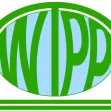Planning
Compelling Needs, Great Technology and Unparalleled Economic Capacity Produce Stunning Transportation Progress ...Not!
Having sat through a Transportation Task Force committee meeting recently where a representative of local government requested funds to enable the completion of a particular road project, I had to chuckle – folks had been asking for the final funds for that road for several years and, several times, various community leaders had touted the resolution of the funding problem with “full speed ahead” declarations. While not quite as embarrassing as the President Bush’s now dated declaration of “Mission Accomplished” in Iraq, it was gaining the same notoriety locally. The actual construction was less than half completed and years away from being finished. Several levels of government ha
So You Want to Change the World, Part 1: Networking for Students (and Others)
Some people choose to work in planning because they see it as a relatively interesting and stable job. Others have dreams of being the equivalent of an all-powerful SimCity-style mayor. However, many choose planning as a career because they want to make a difference in the world. They want to do good and to help those who are the least advantaged. They are attracted by the potential, if limited, for planning to foster environmental justice and social equity.
With transit you can grow better, but not more.
The protesters at Chicago’s Grant Park in 1968 might have been talking about Denver’s multi-billion dollar FasTracks rail expansion while they chanted “the whole world is watching.” With 50+ new transit stations the Denver region has an opportunity no modern American city has been able to realize – to build a regional rail network and link it with land use planning to accommodate growth without diminishing livability. Part of the conversation in Denver is will FasTracks help the region’s competitiveness and capture more growth than it would otherwise? Or is the best planners can do is to use FasTracks as a tool to grow better by reshaping the growth that is already coming?
Summer Academics: Finding Faculty Blogs
With the coming of summer, students finish courses, faculty head off to do research, and practitioners think about vacations. However, for those interested in keeping up to date with academic issues in planning, a number of bloggists provide useful insights into the politics and hot issues in planning education. For students they are a window into the work of educators and for practicing planners they are an easy way to keep up to date with what’s happening in the schools.
Ontario’s leaders look for “Places to Grow”
Think big.That’s what the people of Ontario and the Toronto region set out to do more than 5 years ago when they began a visionary planning process for the area known as the Greater Golden Horseshoe in southern Ontario, Canada. (The Greater Golden Horseshoe is the area around Lake Ontario that stretches from roughly Peterborough to the east, west through metropolitan Toronto, and around the west tip of the lake to the southern side and Niagara Falls — hence the horseshoe shape.)
Reading, Writing, And Planning: Urbanism In High School
The high school curriculum overlooks a great many subjects, so we could go on at length pointing out its ironies and shortcomings. But the topic at hand happens to be urban planning, so let's stick with that.
Pulling Up Stakes On The 'Good Old Days'
The 1950’s and 1960’s were boom times for planning and building in the northeastern United States. Projects were designed and built seemingly overnight. For those who idolize Edmund Bacon (Philadelphia's director of city planning from 1949 to 1970) and Robert Moses (New York City’s master builder from 1924 to 1968), that was the time to plan and design and implement and build --quickly.
Planning Lessons from an Olympic Beauty Contest
Last week, my home city, Los Angeles, lost out to Chicago for the right to represent the United States in the international competition to host the 2016 Olympics. Since an Olympic city selection represents the ultimate inter-urban beauty contest – dare I say, a kind of urban “International Idol” – what did this process tell us about the state of urban planning in two of America’s largest cities?
Candor on Canadian Planning Departments and Planning Schools
Since this is my first blog, let me introduce myself. My name is Brent Toderian. In 2006 I was appointed the City of Vancouver, British Columbia’s Director of Planning. Before that I was the Manager of Centre City Planning and Design for the City of Calgary, Alberta. I am a founding member of the Council for Canadian Urbanism (CanU) which is discussed below. I look forward to your comments on this and future posts.
Such a Sisyphean task this Thing we call Planning
What is this thing we do called planning? Are we really planning or just reacting? And visioning? What’s that all about? These the questions that came to mind as I was reading yesterday’s - Ineffective Local Planning Efforts Push County To Seek Greater Control. And, also, how many articles like this are published on a daily basis?? If you were to add them all up from across the country, I’m sure the number wouldn’t be insignificant.
Why You Should Pay Attention To Planning News
Reading news stories about planning is crucially important to the worth of planners, developers, public officials, policy makers, and anyone else who cares about the way communities form and evolve. By knowing what's going on in other places, those concerned with cities and their development will be better informed to analyze and approach the planning issues facing their own communities.
De-Bunking Smart Cities
About two years ago, after teaching a course at NYU's Interactive Telecommunications Program on "Digitally Mediated Urban Space", I wrote an article for the architectural design journal Praxis that sought to do do two things: 1) make sense of the wide array of digital technologies that are being deployed in urban space, and 2) present a couple of places that I thought exemplified good and bad "design" of digital public spaces. Recently, my research on context-aware computing - computing based on sensors and artificial intelligence - has led me to revisit this piece. Around the same time, I got a call from Lucas Graves, a friend who writes for Wired, and was doing a piece on technologies that are "perpetually around the corner". Lucas was mainly interested in things like videophones, but it coincided with a turn in my research to the applications side of context-awareness: smart cities, smart places, smart homes, and smart objects. As an urban planner, I immediately gravitated to thinking about smart cities and smart places, but wondered in the back of my mind - is this something that is really happening, or just another one of those technologies that are perpetually around the corner?
Planning on Walking?
With positive effects on public health, safety, and environmental quality -- walkability has become the new buzz word in planning.
Reston Town Center: A Living Urban Core
What makes the Reston Town Center successful? How does this urban core attract families and residents of all ages and how does it balance commercial and residential development?
Pagination
- First page
- Previous page
- …
- 74
- 75
- 76
- 77
- 78
- 79
- 80
- 81
- 82
Placer County
City of Morganton
HUD's Office of Policy Development and Research
Dongguan Binhaiwan Bay Area Management Committee
City of Waukesha, WI
Los Angeles County Metropolitan Transportation Authority
Indiana Borough
Urban Design for Planners 1: Software Tools
This six-course series explores essential urban design concepts using open source software and equips planners with the tools they need to participate fully in the urban design process.
Planning for Universal Design
Learn the tools for implementing Universal Design in planning regulations.










